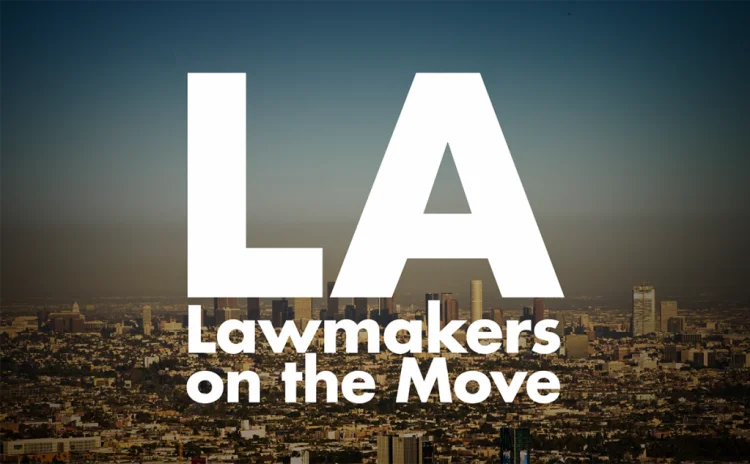Newsom signs ‘Election Rigging Response Act’ legislative package

Governor Gavin Newsom yesterday signed the “Election Rigging Response Act” legislative package, giving California voters the ability to adopt a new, temporary gerrymandered congressional map that would be highly favorable to Democrats in the state.
The state legislation is in response and a push back against President Trump and the Republican-led Texas, who are gerrymandering their state to win more GOP congressional states in next years National two-year midterm race.
“Californians have been uniquely targeted by the Trump Administration, and thanks to the hard work of the California legislature, they will have a choice to fight back — and bring much needed accountability to Trump’s efforts to undermine the democratic process,” said Newsom in a statement at the signing.
The legislative package allows Californians to adopt a new, temporary congressional map that neutralizes the gerrymandering in Texas in response to the congressional redistricting in Texas.
It also establishes timelines and procedures for conducting a statewide special election for Proposition 50 and provides the funding for the special election, which is set to take place on November 4, 2025.
If the measure passes in the special election, the new temporary gerrymandered Congressional District Maps would take effect on November 4.
According to California voter registration data from August 2024, the state has 46.2% registered Democrats, 24.7% registered Republicans, and 21.9% Independents (no party preference).
Valladares decries legislature’s approval of Newsom’s gerrymandering bill

State Sen. Suzette Martinez Valladares (R-Santa Clarita, Lancaster, Palmdale, portions of the Antelope Valley) yesterday decried the legislature’s passage of Gov. Gavin Newsom’s redistricting legislative package that allows for the state’s Congressional District lines to be gerrymandered in favor of the Democratic Party..
“Today, California’s majority party rammed through Governor Newsom’s unconstitutional redistricting maps. In doing so, they ignored our Constitution and stripped power away from the independent, voter-approved Citizens Redistricting Commission,” said Valladares.
“I offered a simple amendment: if politicians want to overturn the rules and draw their own districts, then they should live by the same standard as the commissioners — a 10-year ban on running for office. It failed on a straight party-line vote. That tells you everything.
“This is a blatant power grab — politicians protecting themselves at the expense of voters. But we will not stop, we will continue to fight this abuse.
“Californians deserve fair maps, transparent elections, and leaders who respect the will of the people. We won’t give up that fight,” Valladares concluded.
Kamlager-Dove introduces legislation helping Afghan allies

U.S. Rep. Sydney Kamlager-Dove (D-Culver City, View Park-Windsor Hills, parts of South LA), Ranking Member of the House Foreign Affairs Subcommittee on South and Central Asia, led the introduction of the bipartisan Enduring Welcome Act, which reinforces the statutory mandate for Afghan relocations by codifying the Office of the Coordinator for Afghan Relocation Efforts (CARE) and establishing a database of cases in the Afghan relocation pipeline.
The legislation also provides critical tools to expedite family reunification, improve interagency coordination, and enhance oversight through regular reporting to Congress, without altering rigorous national security vetting procedures.
“Honoring our commitments to our Afghan allies should never be a partisan issue, but a matter of moral responsibility, national honor, and global credibility,” said Kamlager-Dove. “With this bipartisan bill, we are sending a clear and unified message: the United States keeps its promises. We will not turn our backs on the brave Afghans who risked everything to protect our servicemembers. Their courage helped save American lives, and now it is our duty to protect theirs. This is not just about policy — it’s about principle.”
The State Department established CARE to implement the Enduring Welcome program, which is dedicated to vetting and relocating Afghans who supported the U.S. mission in Afghanistan and therefore qualify for Special Immigrant Visas.
Though Congress codified the CARE Coordinator position in the FY25 National Defense Authorization Act in December 2024, the State Department subsequently dissolved the CARE office and has not appointed a Coordinator.
This bill reinforces the statutory mandate for CARE and reaffirms the U.S. commitment to Afghan relocation efforts.
Raman, Yaroslavsky push to allow single-stairway buildings


Los Angeles City Councilmembers Nithya Raman (D-parts of Silver Lake to Los Feliz, Hollywood Hills, Sherman Oaks, Encino, parts of Studio City, Van Nuys, Reseda) and Katy Yaroslavsky (D-Bel Air, Beverly Crest, Beverlywood, Cheviot Hills, Encino, Fairfax, Hollywood, Palms, Pico-Robertson, Westwood) yesterday moved the City Council to prepare a draft ordinance amending the City’s Build Code to allow single-stairway, single-exit, multifamily unit residential buildings of up to six stories.
The thinking behind the amendment is that it will spur the construction of much-needed new housing.
Current Los Angeles building codes require two stairwells in all multi-family buildings above three stories, a requirement born out of early 20th-century planning concerns related to fire safety. However, studies have shown that increased safety features like sprinklers and fire-resistant materials have since rendered the need for multiple staircases obsolete, and major cities across the country, including New York and Seattle, now allow for the development of single-stairwell buildings over three stories.
“This outdated requirement makes it almost impossible for young families in the City of Los Angeles to find affordable apartments with the space they need,” said Raman. “Today’s vote to reform our building code is a huge win that will stimulate the construction of badly needed new housing, especially in already-developed neighborhoods near public transportation and commercial areas.”
“Solving our housing crisis means looking at the whole system. That includes cutting red tape and modernizing outdated codes so projects can move forward more quickly, at lower cost, and with designs that create real homes for families,” said Yaroslavsky. “We are creating the conditions for more housing to be built in ways that reflect our communities’ needs and move Los Angeles toward a city that is affordable, sustainable, and livable for everyone.”












